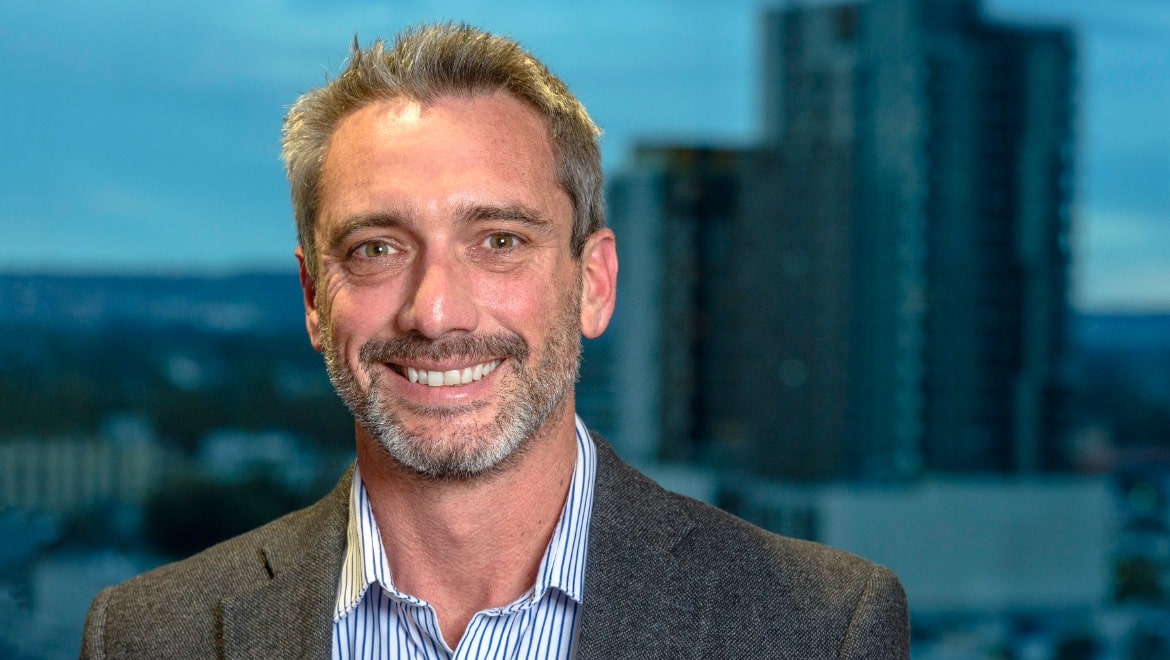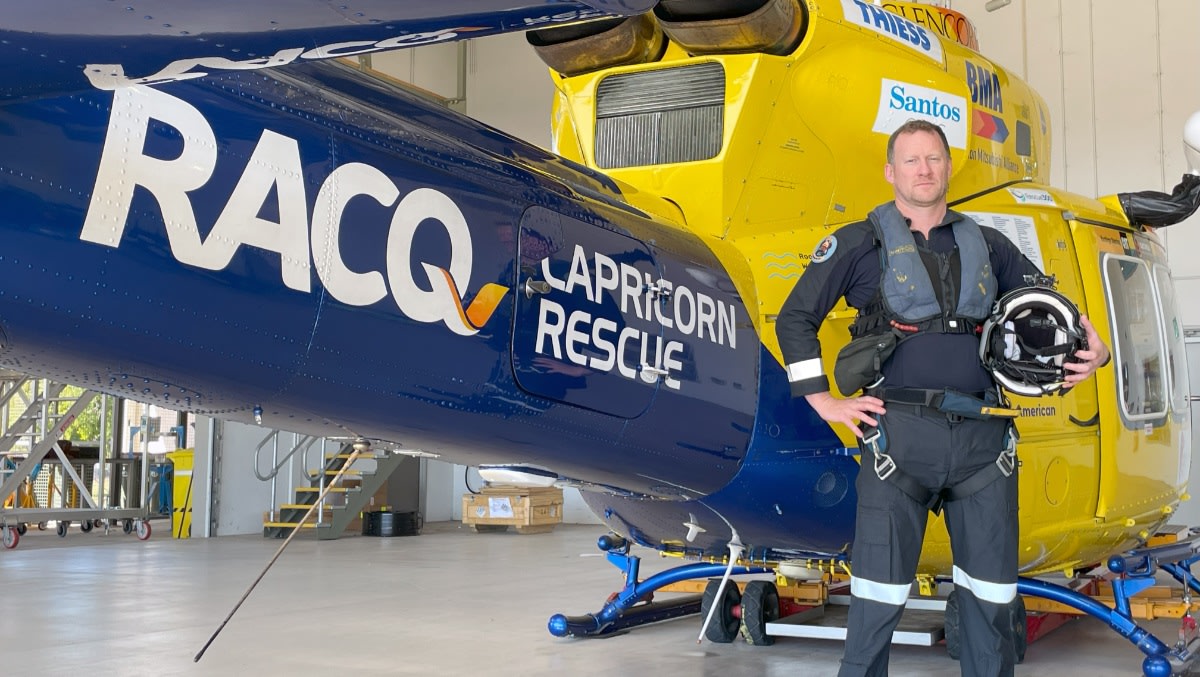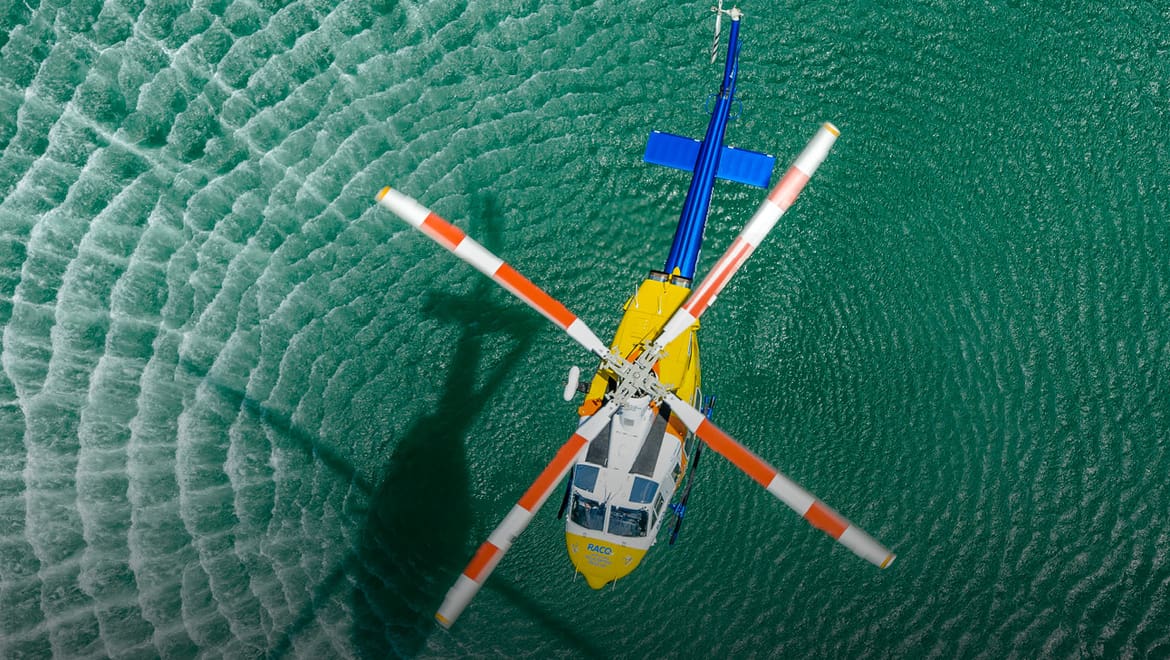
New Babcock Australasia (Babcock) managing director, aviation and critical services, Peter Newington, outlines his vision for the aviation innovation and technology agenda he is pursuing in his new role.
With a career spanning 15 years in the legal, defence, aviation and critical services industries in Australia and the UK, and working with the British Army as well as defence-aligned companies, Newington brings to Babcock a strong innovation vision and the leadership to deliver it.
His particular interest is how Babcock can reduce pilot cockpit and engineering workload in Emergency Medical Service (EMS) helicopters.
“I am particularly keen to investigate, trial, and explore new technology to do this,” Newington said.
Based on his experience as a military pilot in the British Army, Newington is particularly keen to explore the use of technology that is typically used in military settings, such as helmet-mounted, heads-up display. Technology with enhanced situational awareness and low visibility capability has aided pilots on combat operations in Afghanistan and Iraq for years.
“The heads-up display, attached to the Night Vision Goggle (NVG)-mount for daytime use and as a monocle piece over an NVG-tube for night-time use, displays all the essential data a pilot needs to operate the aircraft without flying with “eyes in”— that is requiring visual contact.
“What we find in practice is that the flight instrumentation, navigation, and other custom pieces of data are displayed in front of the pilot’s vision—wherever the pilot looks, the information is there.
“When turning or looking down at an underslung or winch load, the information is displayed for the pilot to observe or action as the situation sees fit. However, the increased workload to absorb this information in a non-traditional way is confronting, not intuitive, and takes practice.
“The technology is not new; however, it is new in the civilian world and in particular for EMS operations,” he said.
Newington expects to see, with the introduction of new aircraft, helmet-mounted, heads-up display units introduced across Babcock’s entire fleet of helicopters.
“With the introduction of newer and more advanced helicopters into our operations, it is an opportune moment to assess and explore the introduction of helmet-mounted, heads-up display units,” Newington said.
“This piece of technology could enhance Crew Resource Management (CRM), situational awareness, crew performance training through the recording and reviewing of the flight imagery, and assist with low visibility flight operations,” he said.
Newington is also interested in electric vertical take-off and landing (e-VTOL) aircraft that is currently being designed, built, and tested around the world.
“This technology is in its regulatory infancy, with many industry observers predicting aviation governing body approval in 2025 or later. This technology is one to watch,” Newington said.
“What’s exciting about e-VTOL is its solid standing in the sustainable category of aviation with it being electric and hydrogen-fuelled. The continued development in batteries and power delivery provides the user with up to 400kg of payload over a 200km range at a speed 1.5 times faster than the cruising speed of an AW139 helicopter,” he said.
Newington brings to his tenure with Babcock an invigorated drive for innovation and technological enhancement in aviation.
“With Babcock’s rich heritage in the aviation sector, strong customer support, and a motivated and competent workforce, Babcock is well placed to push the realms of reality and beyond.
“Babcock’s diverse and established operations across defence and aerospace provides ‘reach’ into areas not traditionally available to other aviation companies. It drives the dynamic nature and forward-thinking encouraged, fostered and funded within Babcock, especially concerning technology—both existing and not yet even thought of,” he said.



















chris
says:But with a range of just 200 km, you couldn’t even reach Cowra or Canberra or Moruya in still air from Sydney. So what is the point of being able to cruise at 180 knots? (i.e. 1.5 times the AW139)
Adrian P
says:Useful in having the ability to take a drowning victim from Bells Beach on the Surf Coast to the Alfred Hospital in Melbourne.
Also the helmet technology gives the ability to observe the vital flight instruments while looking at adjacent cliffs so as not to fly into them.